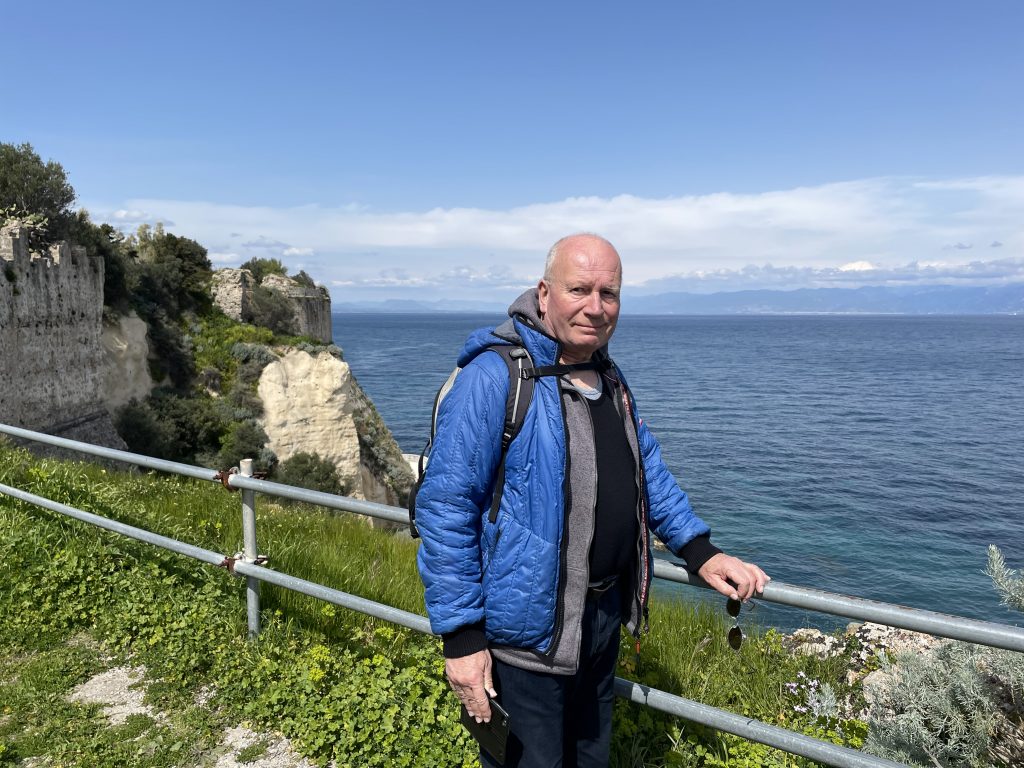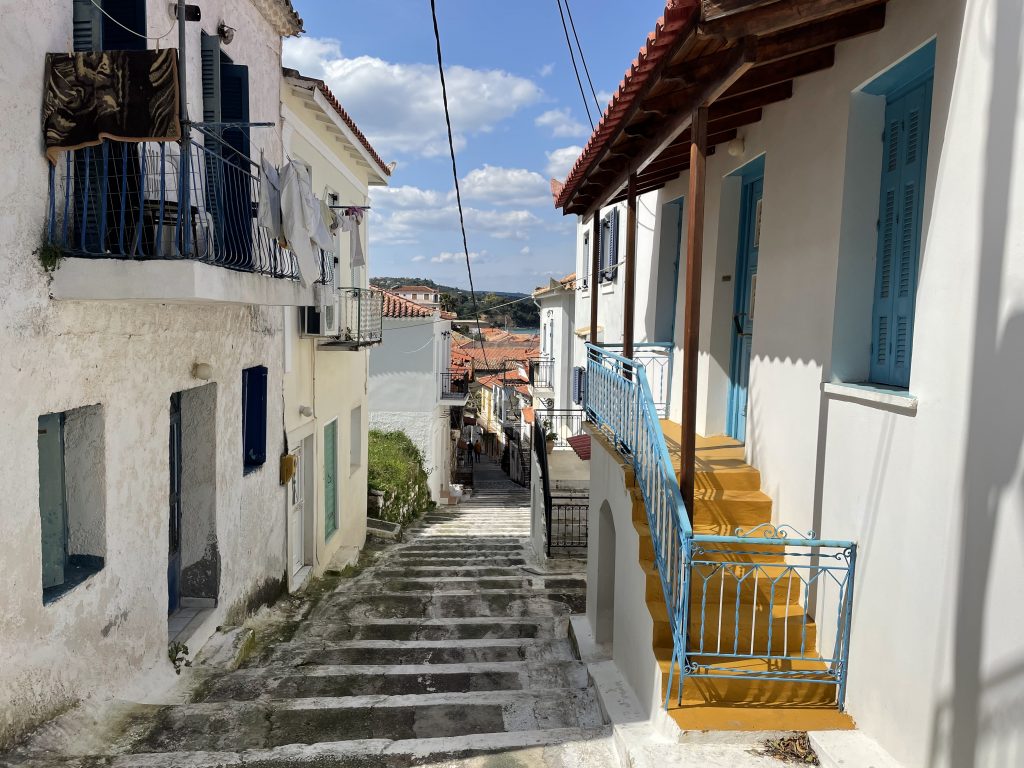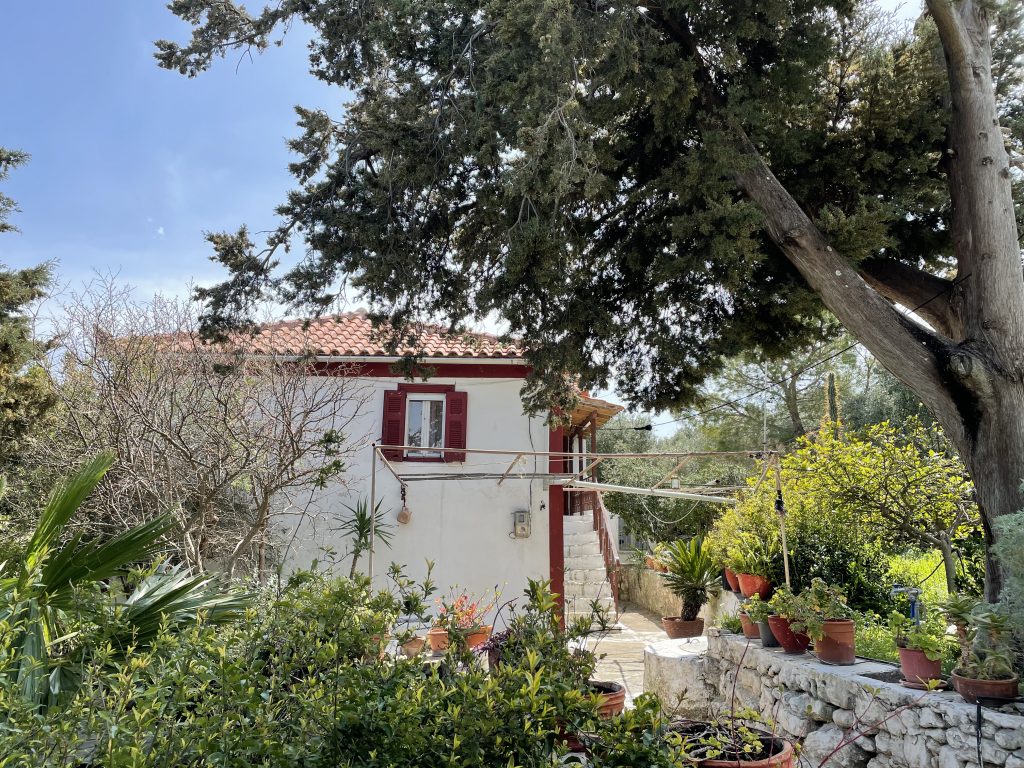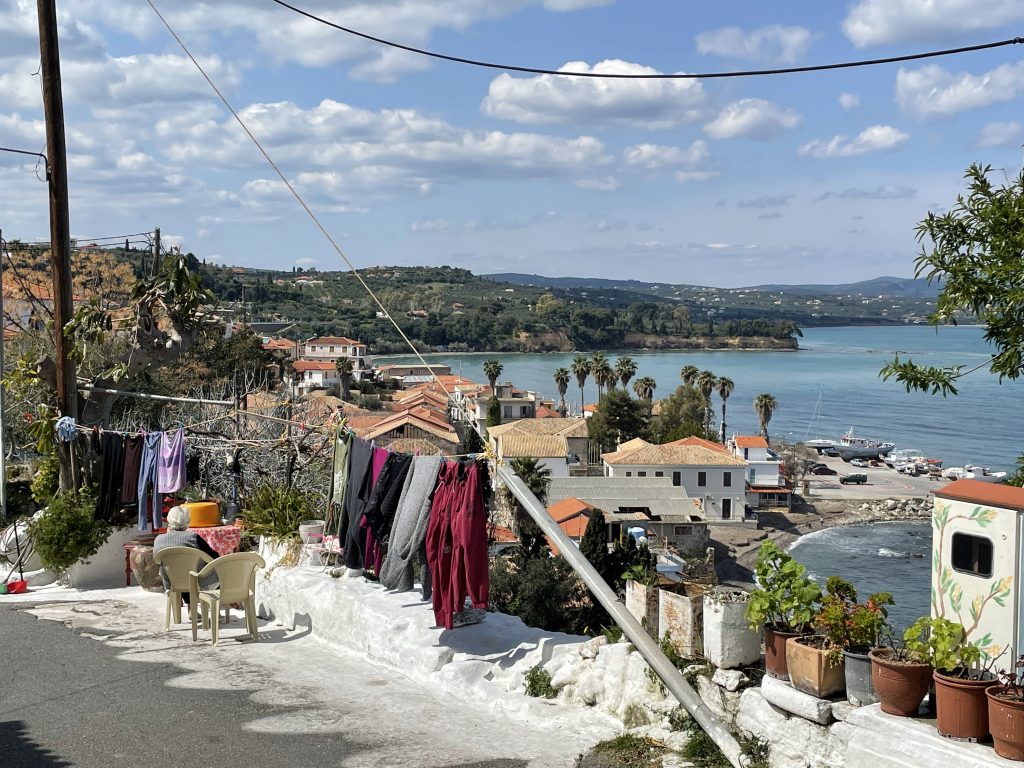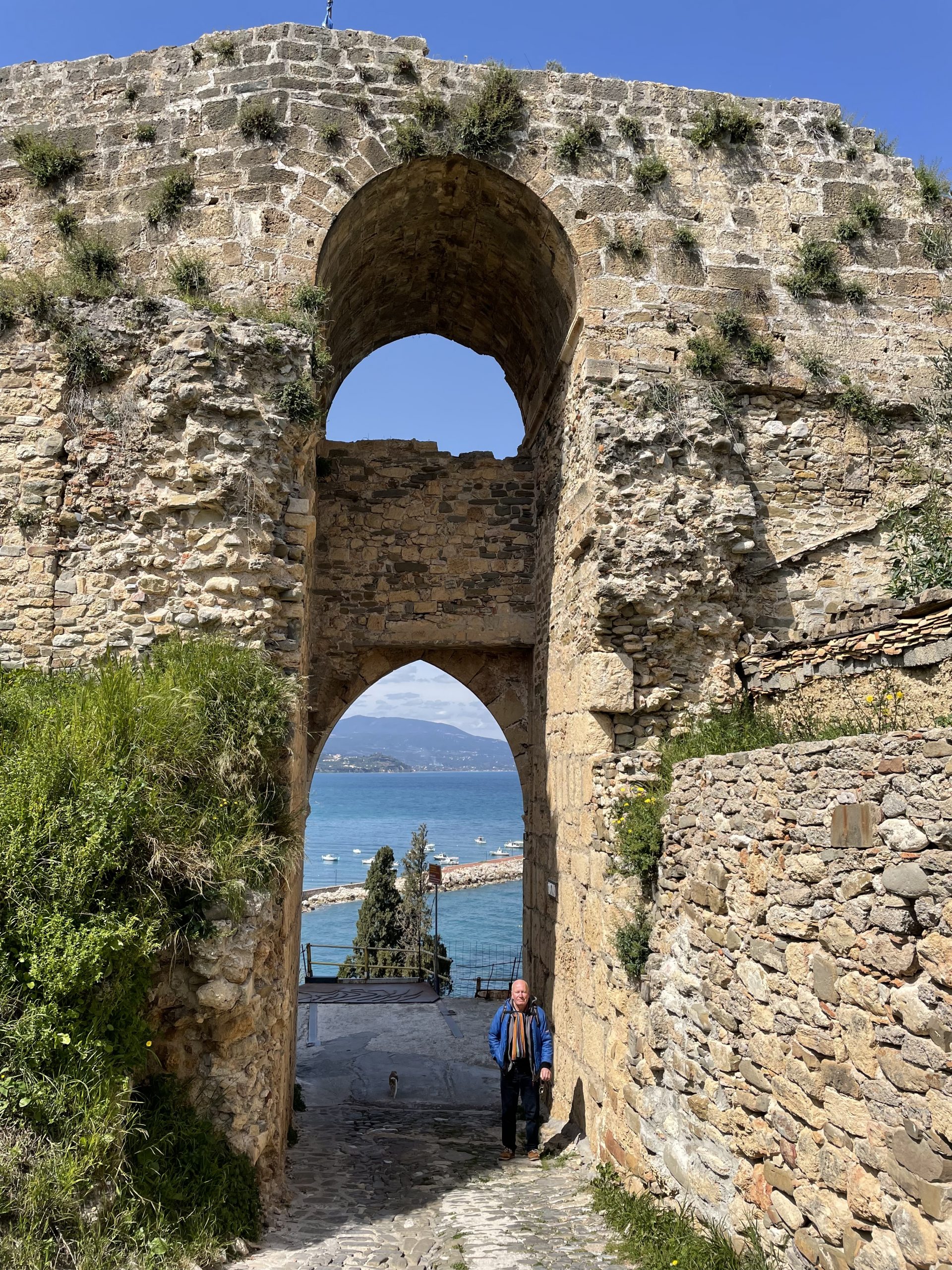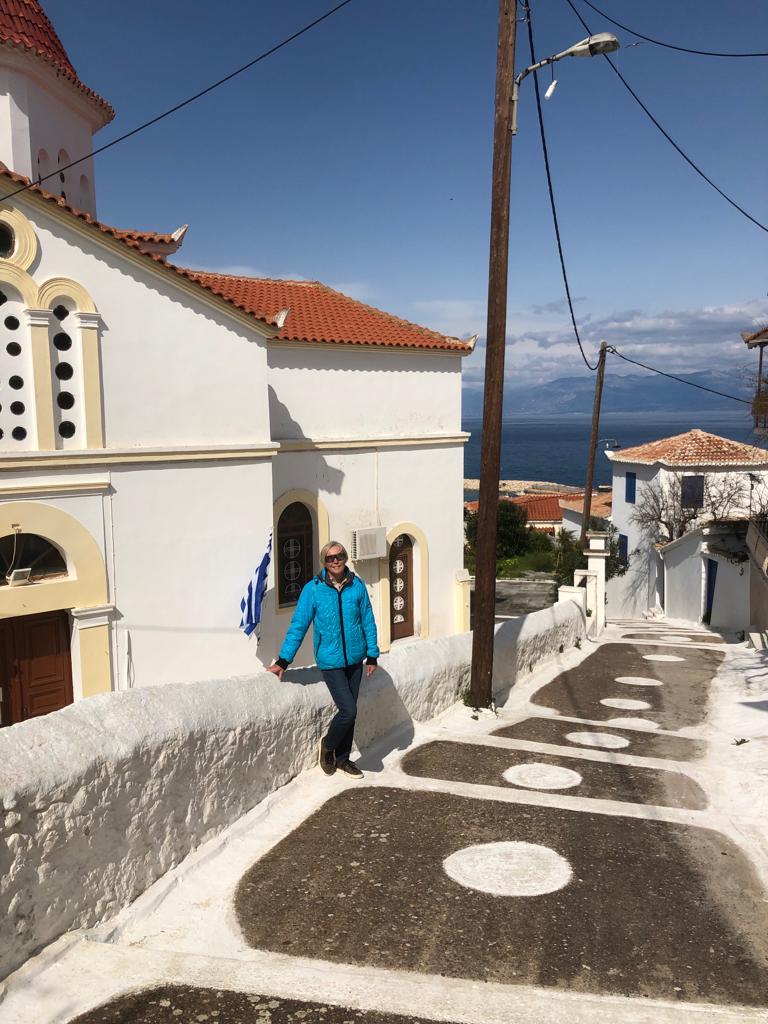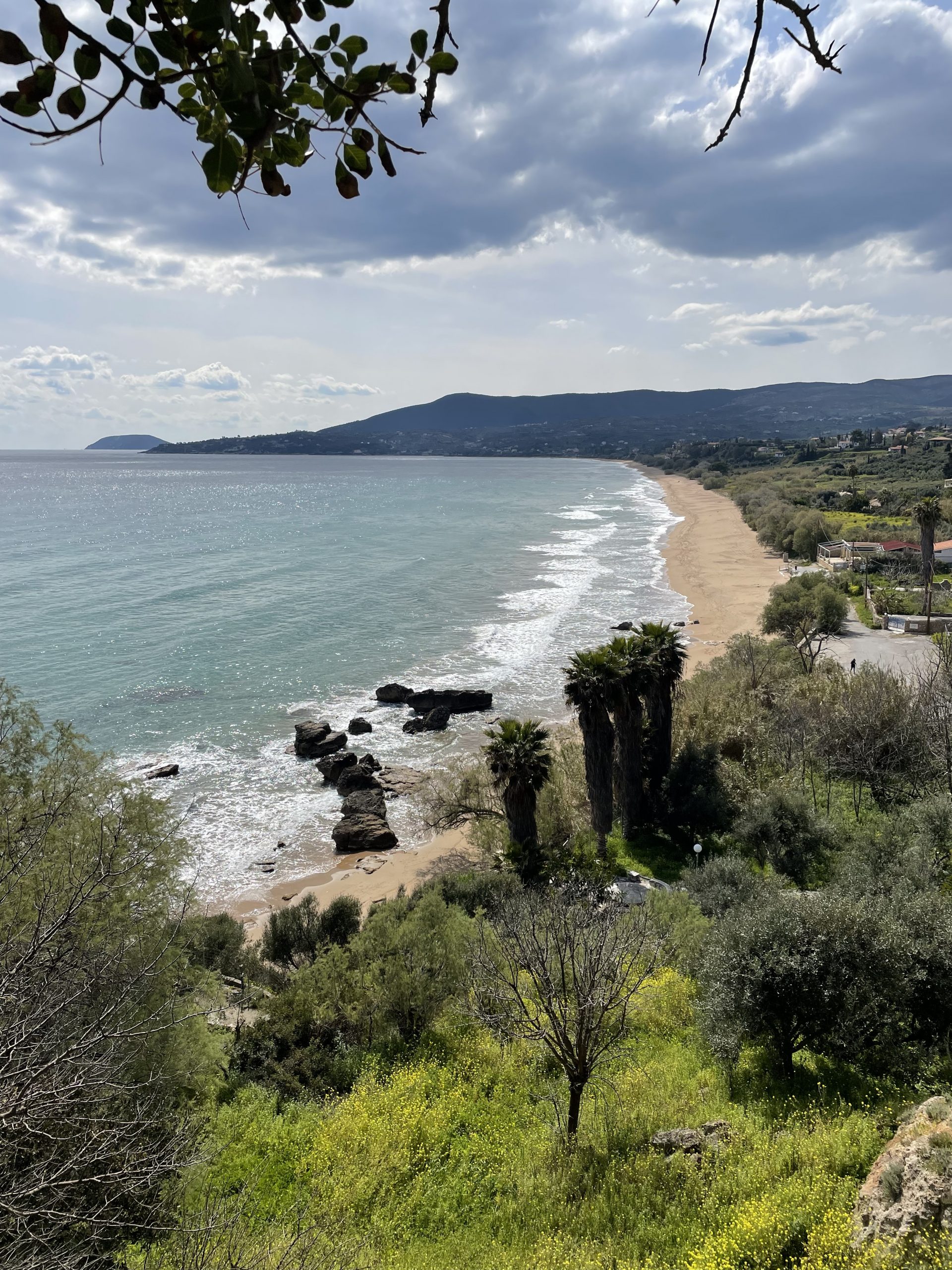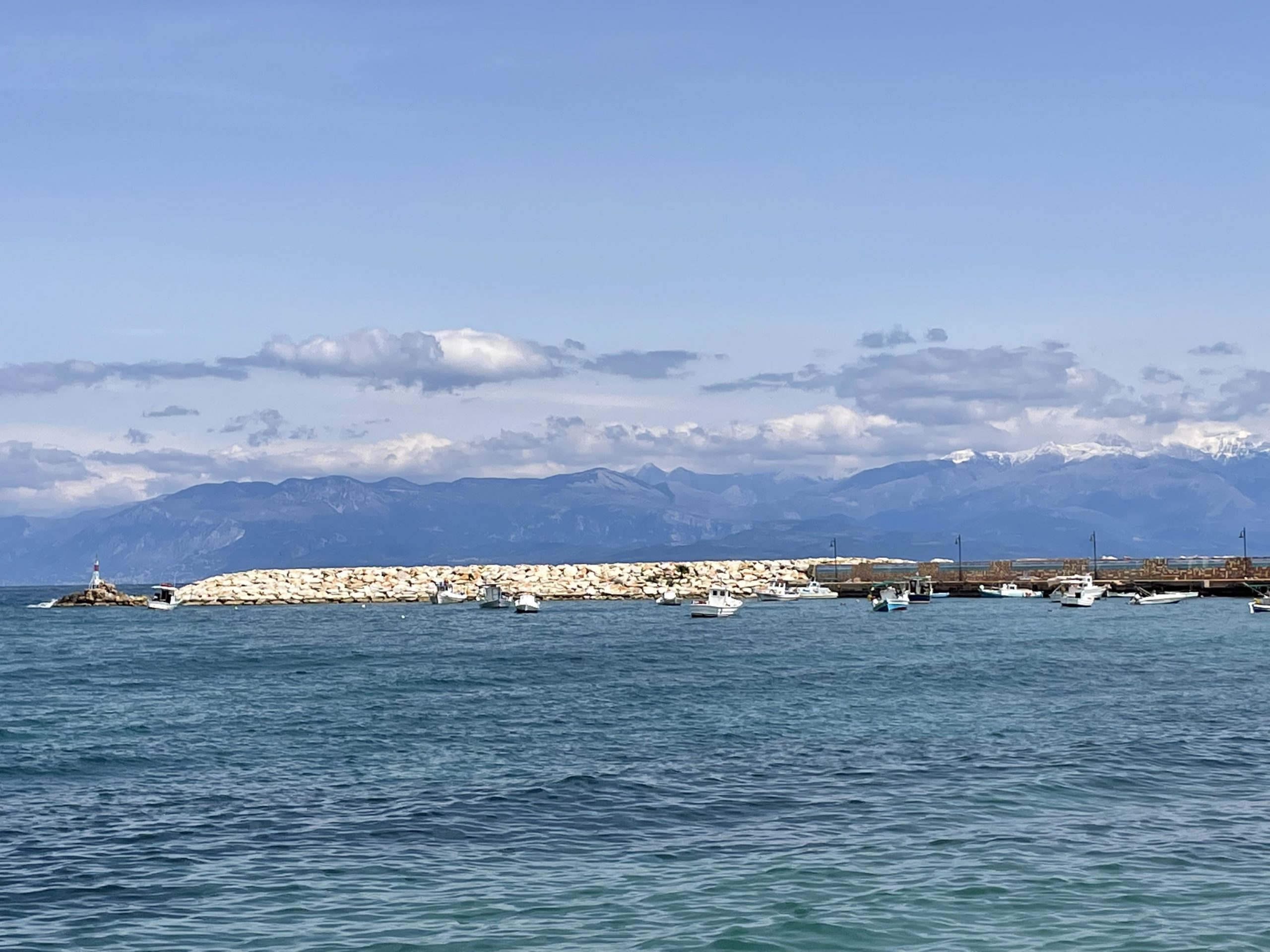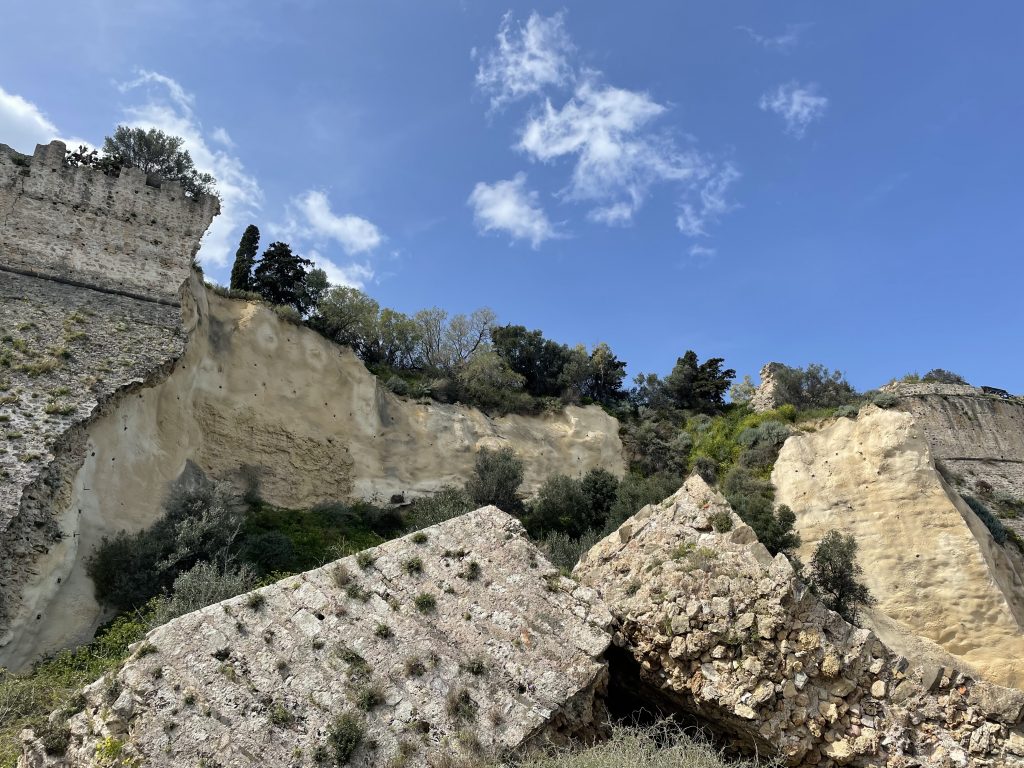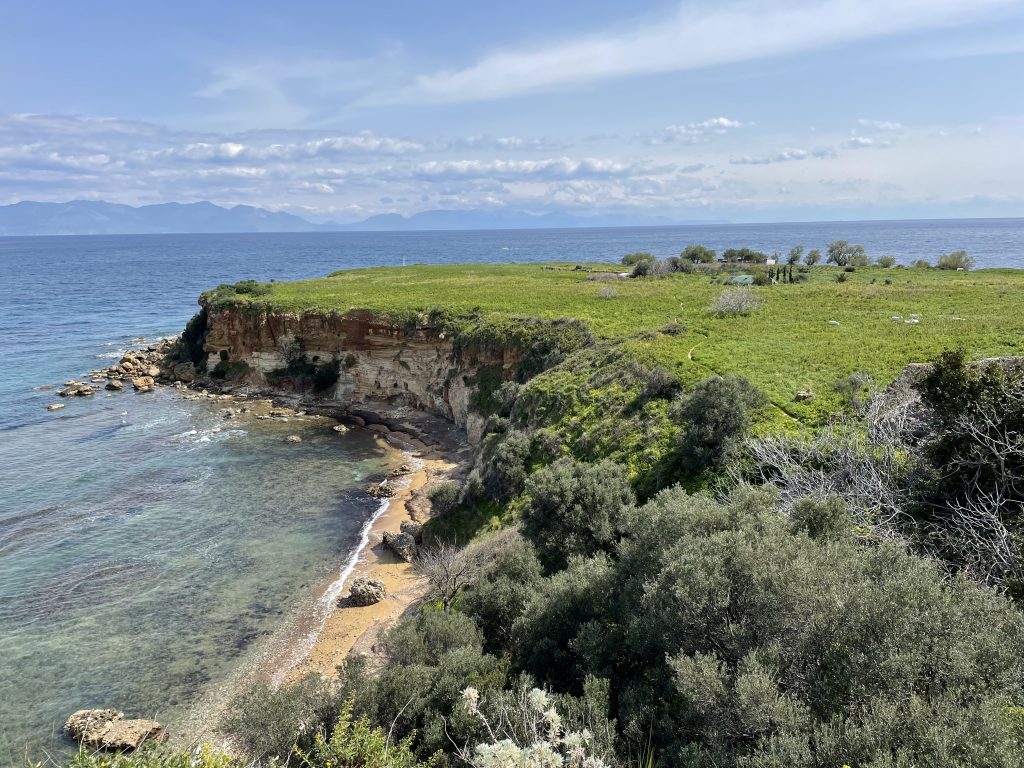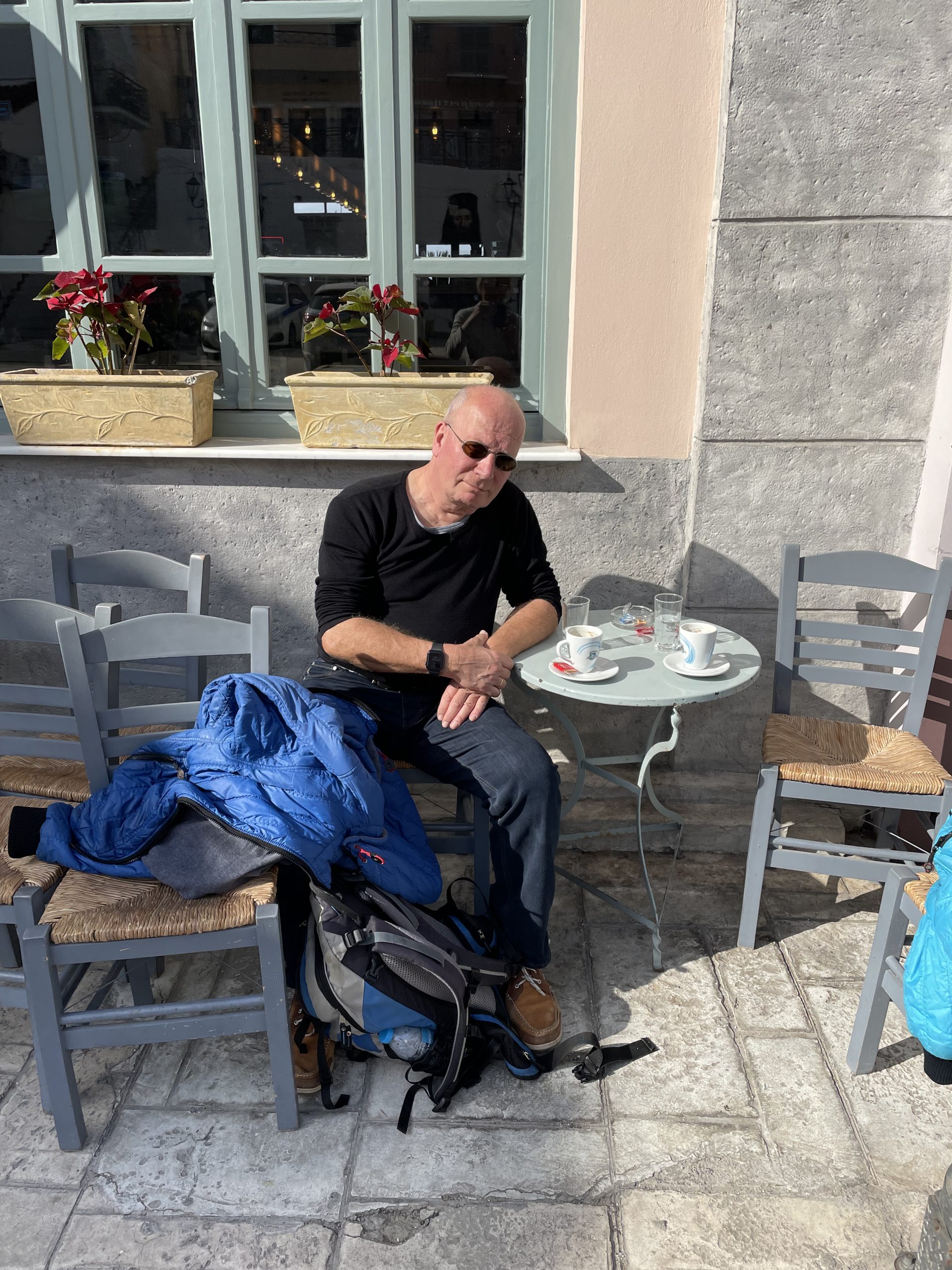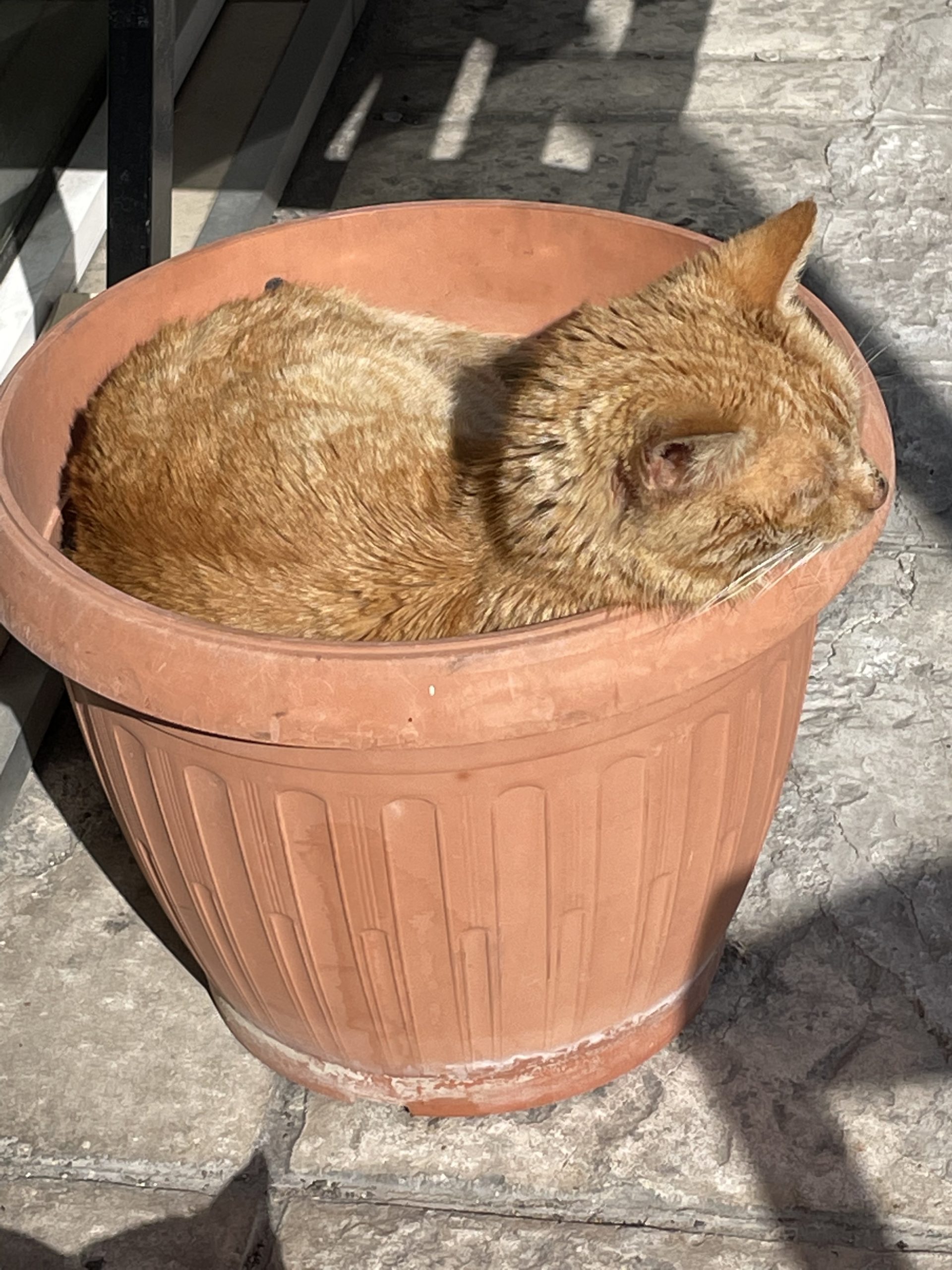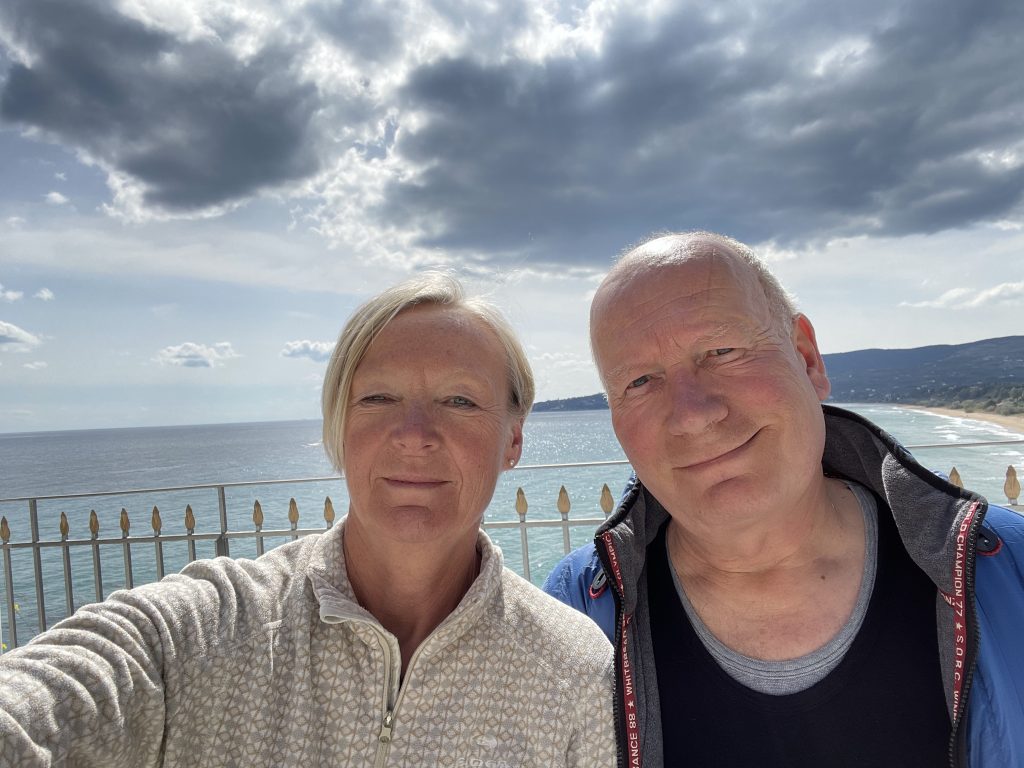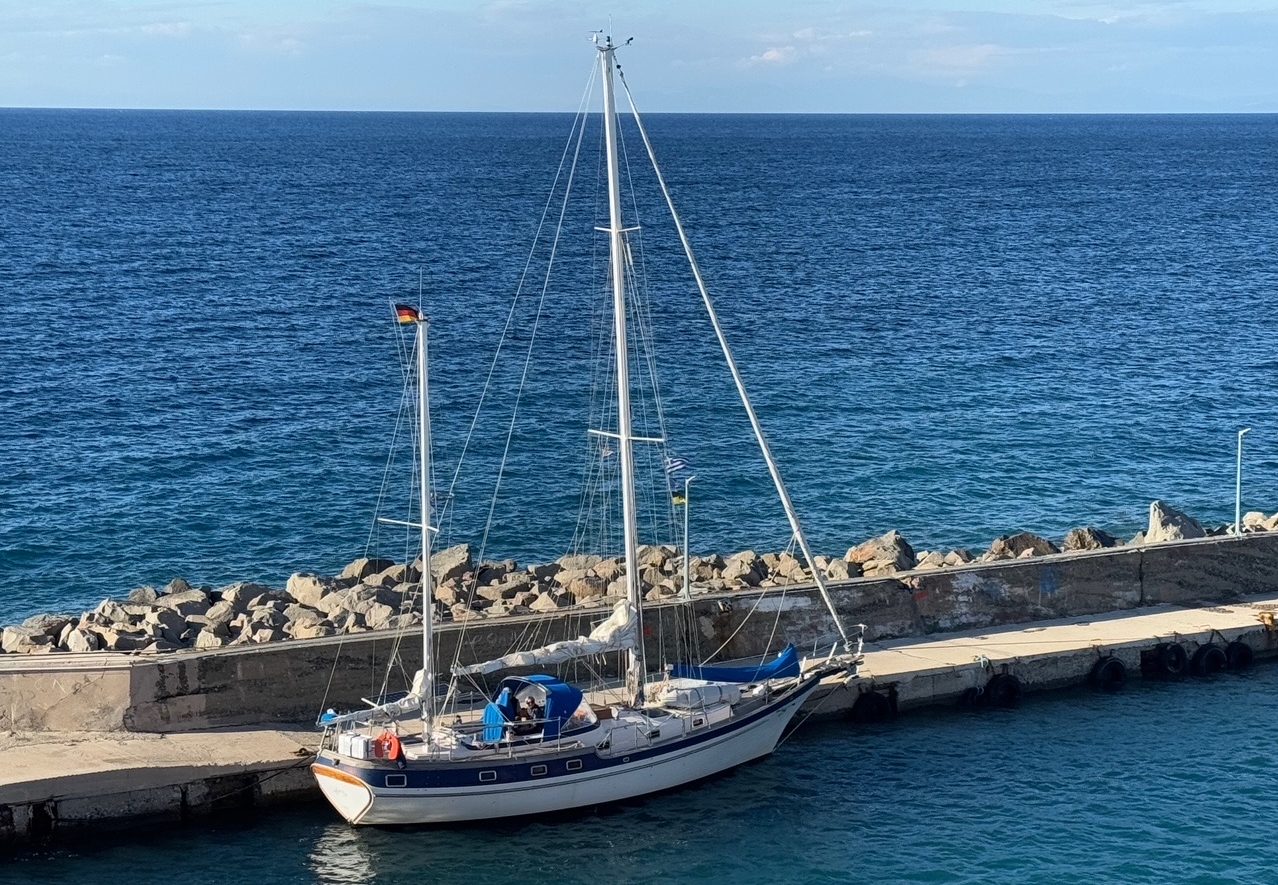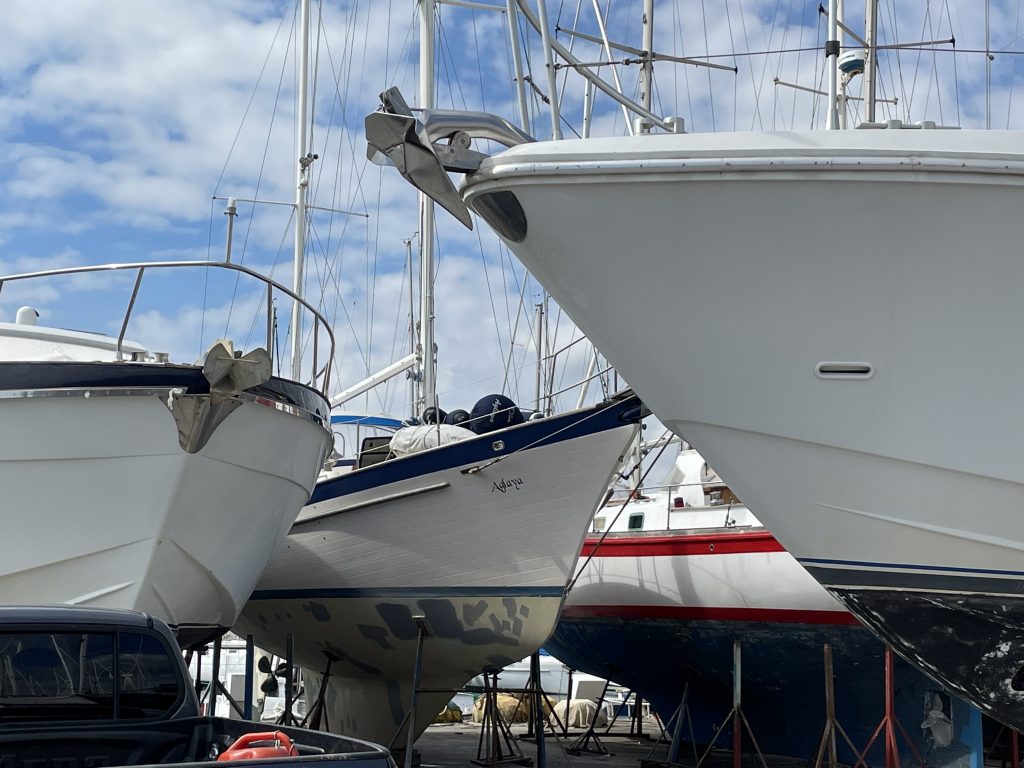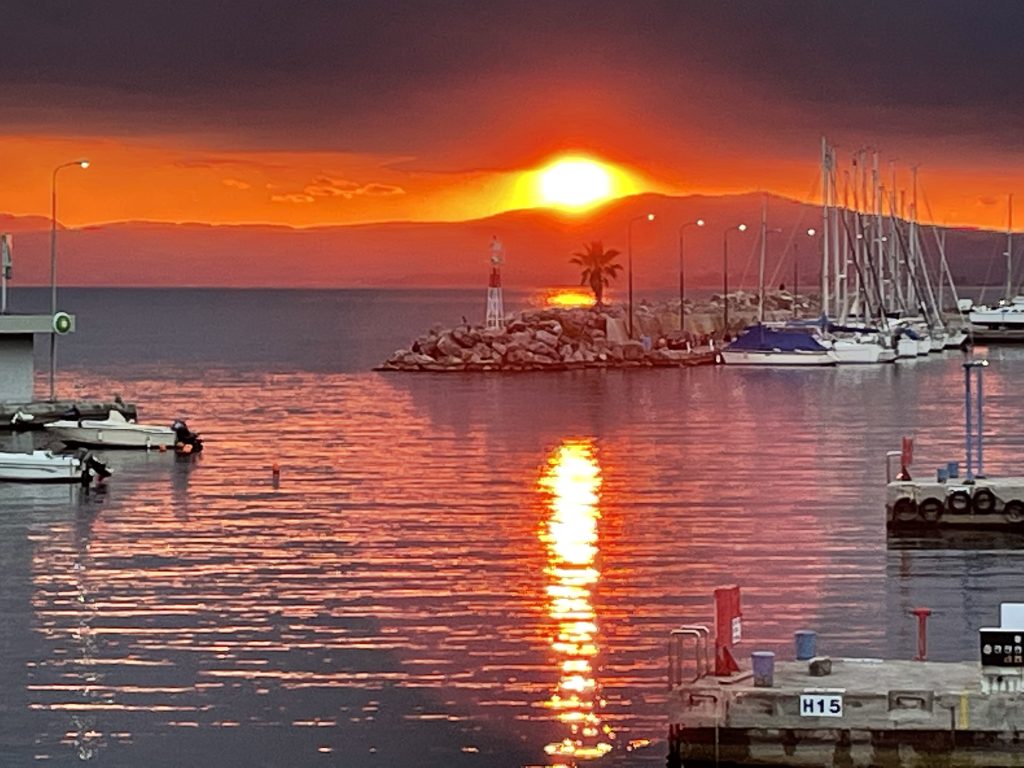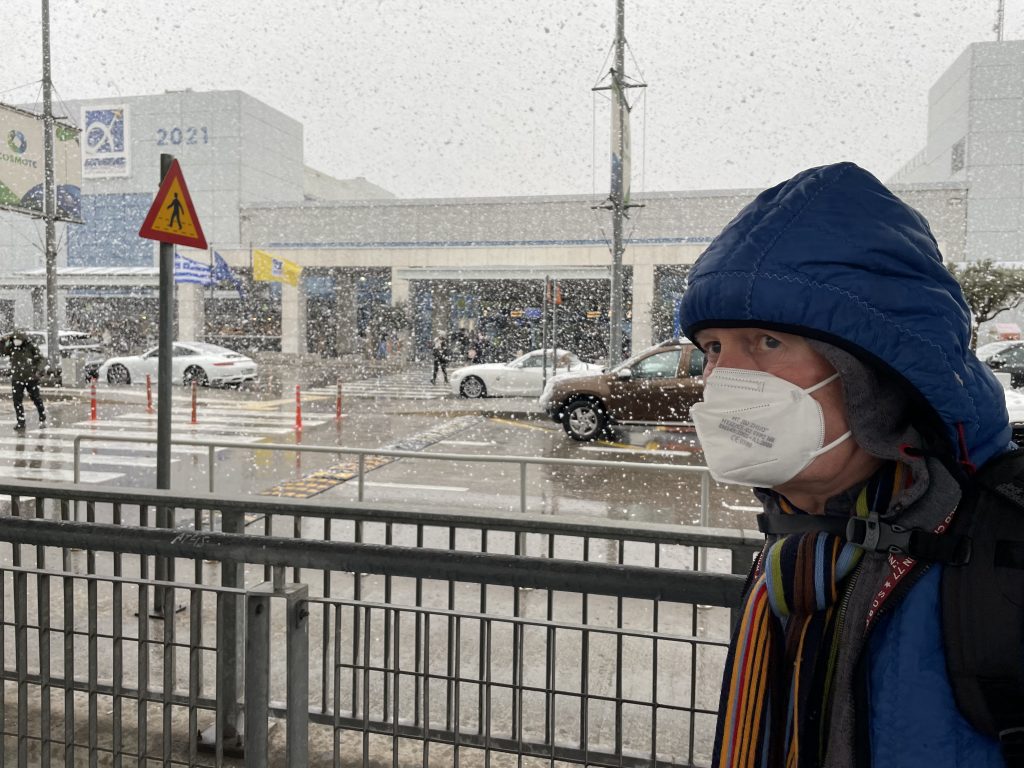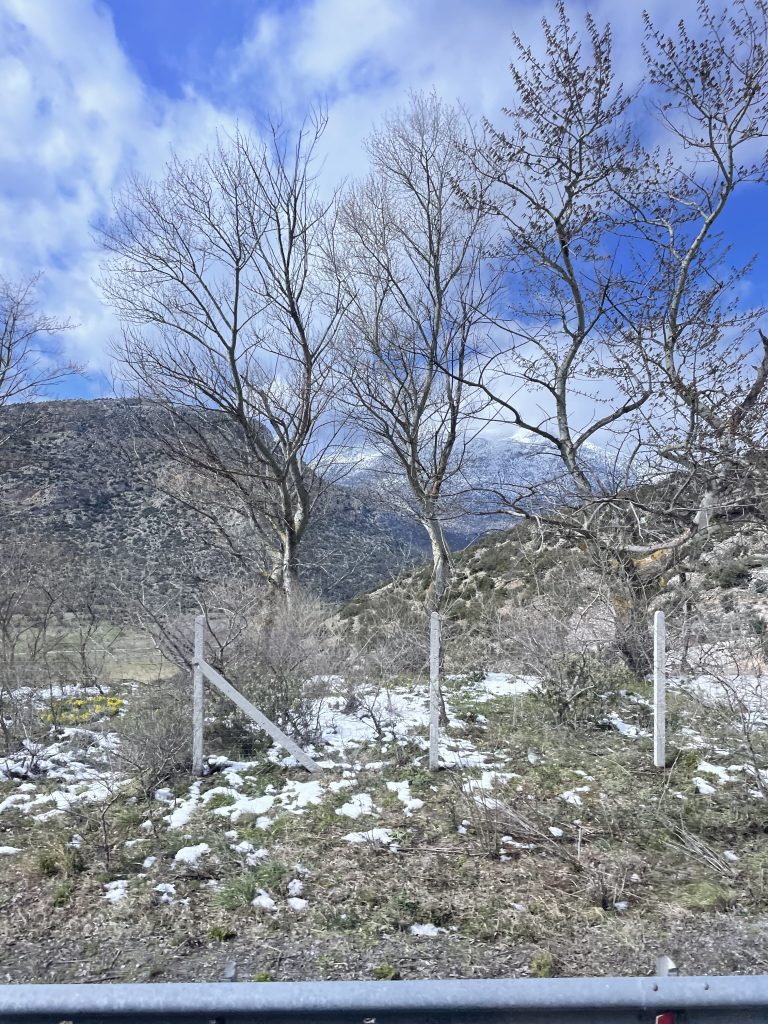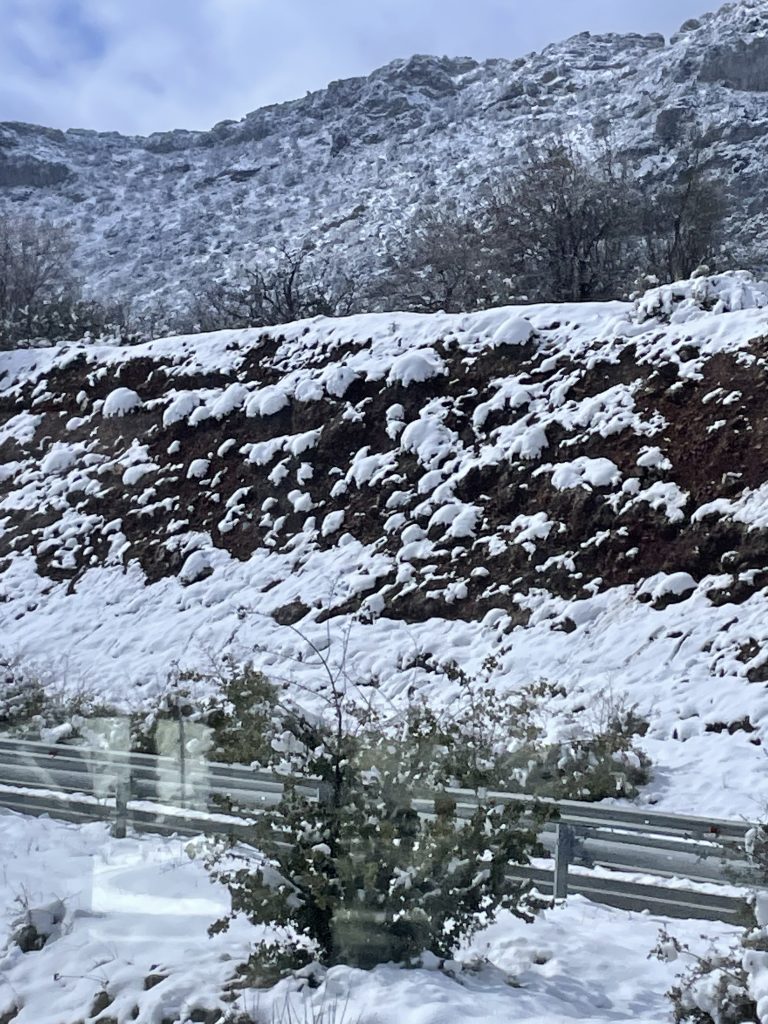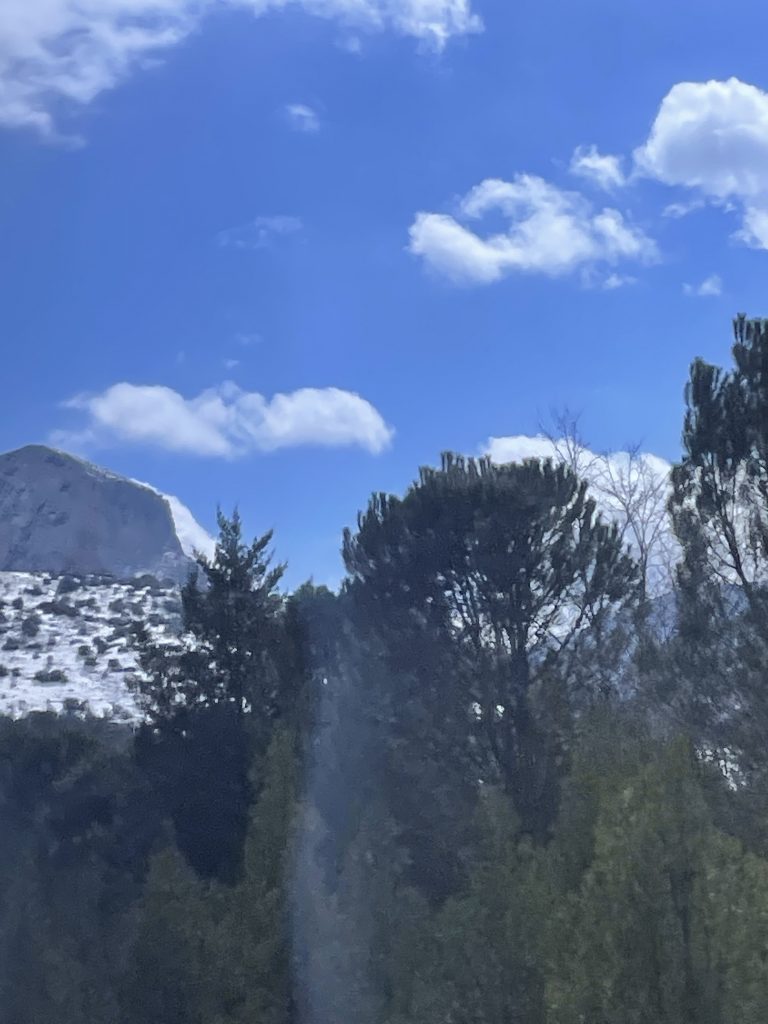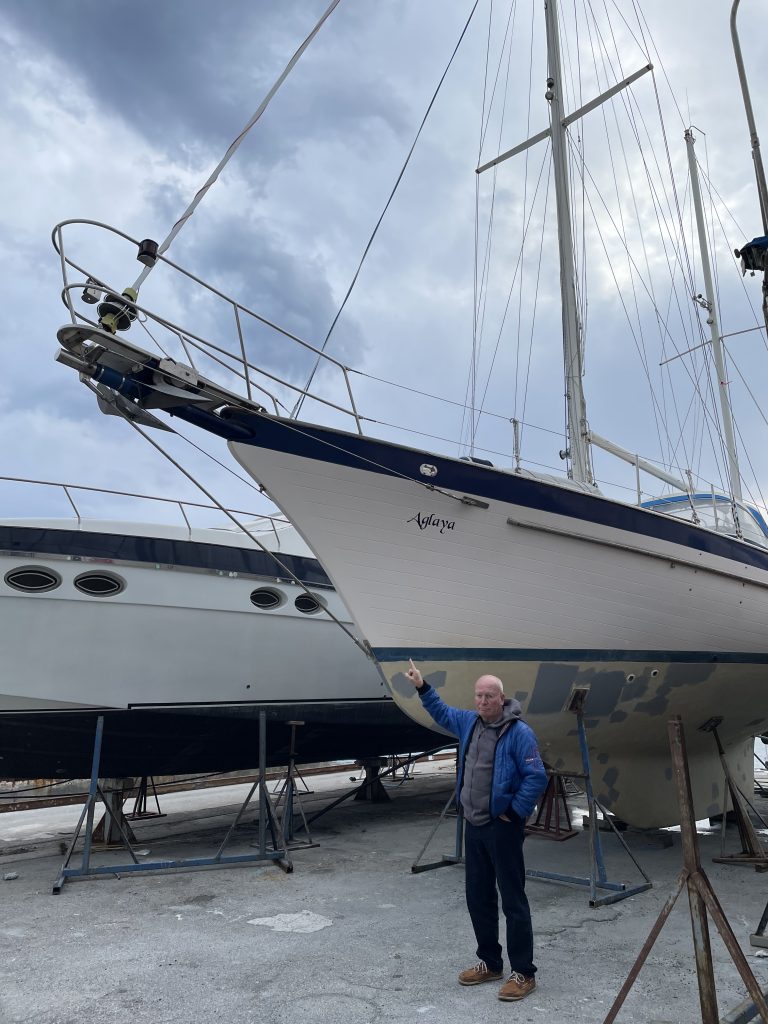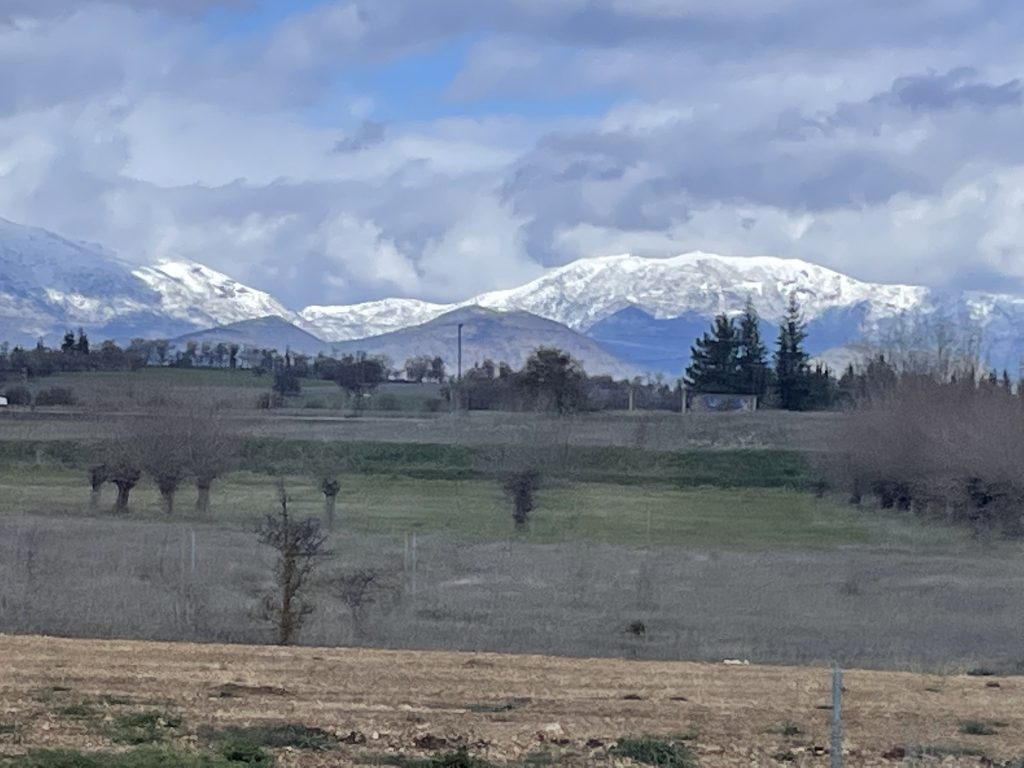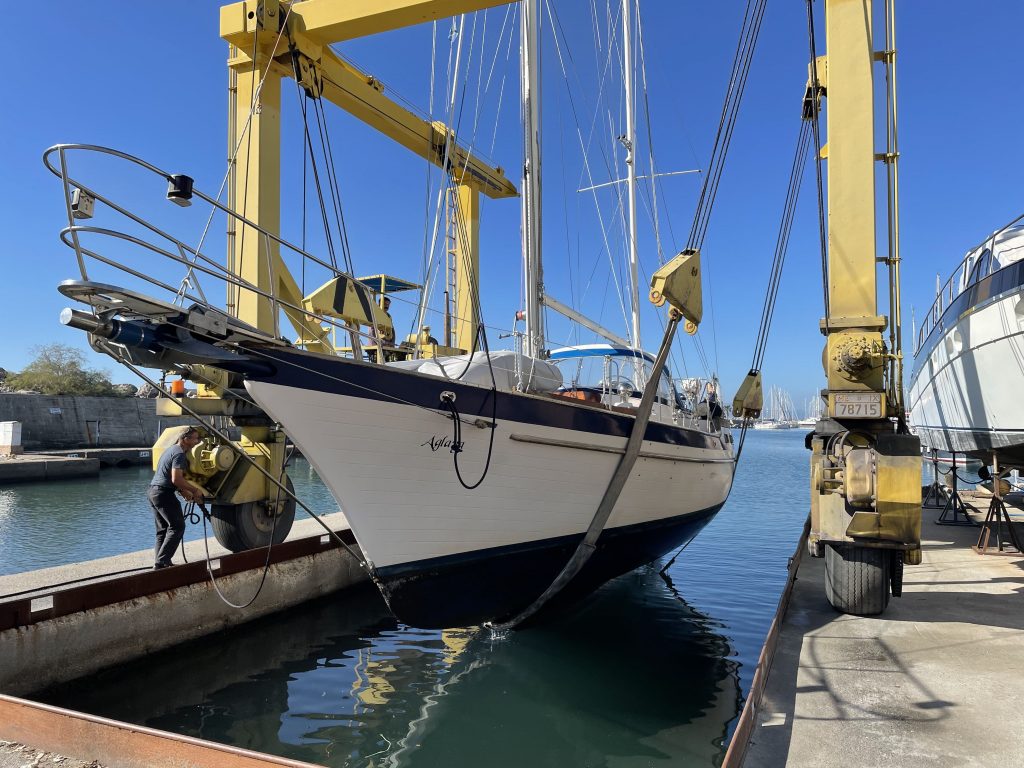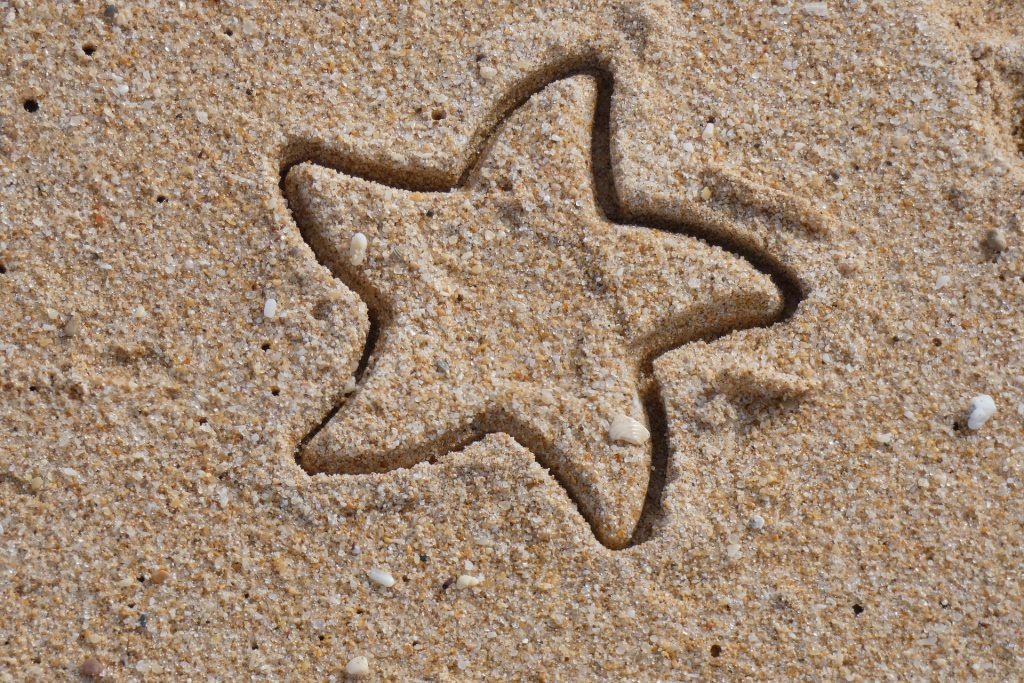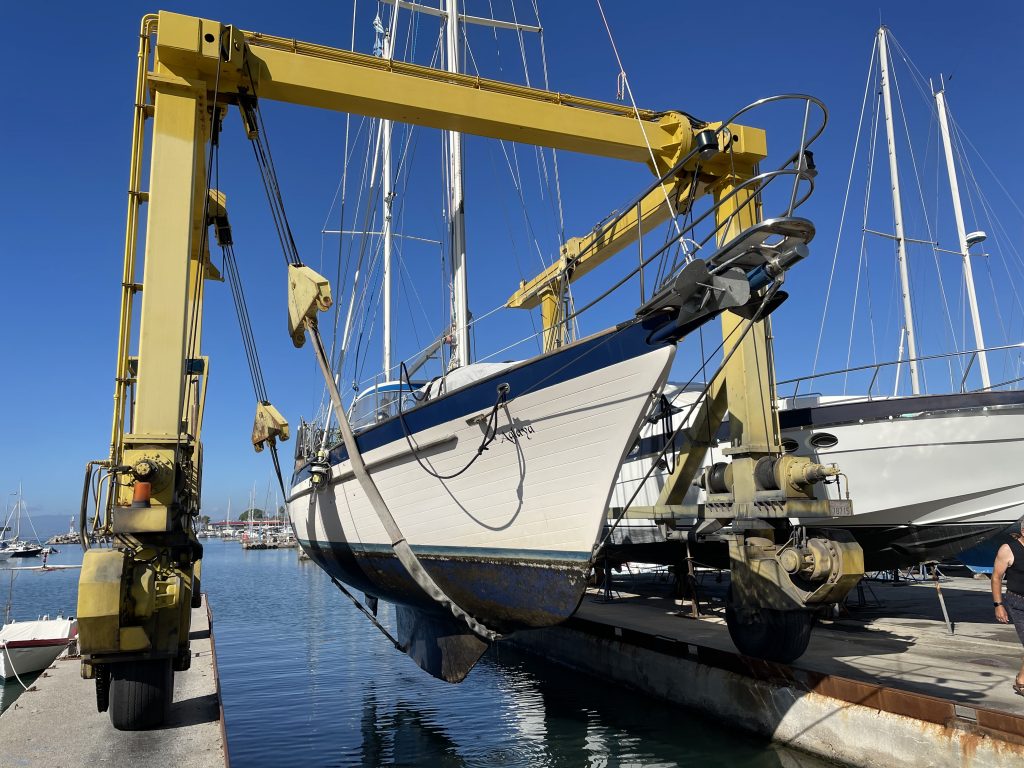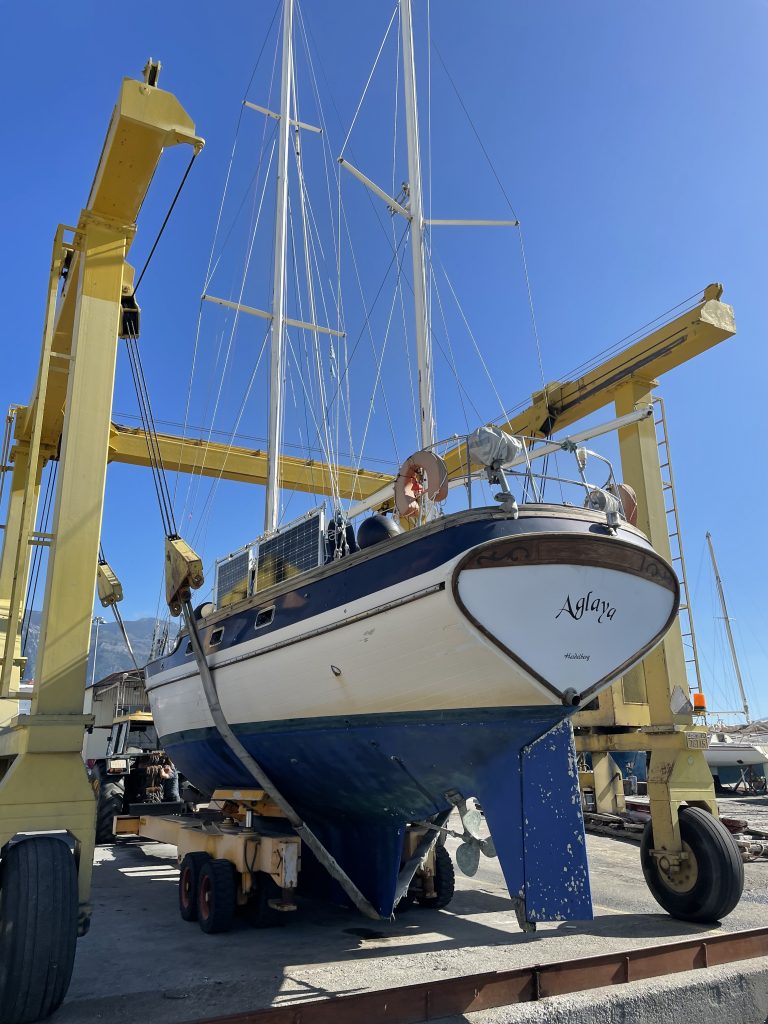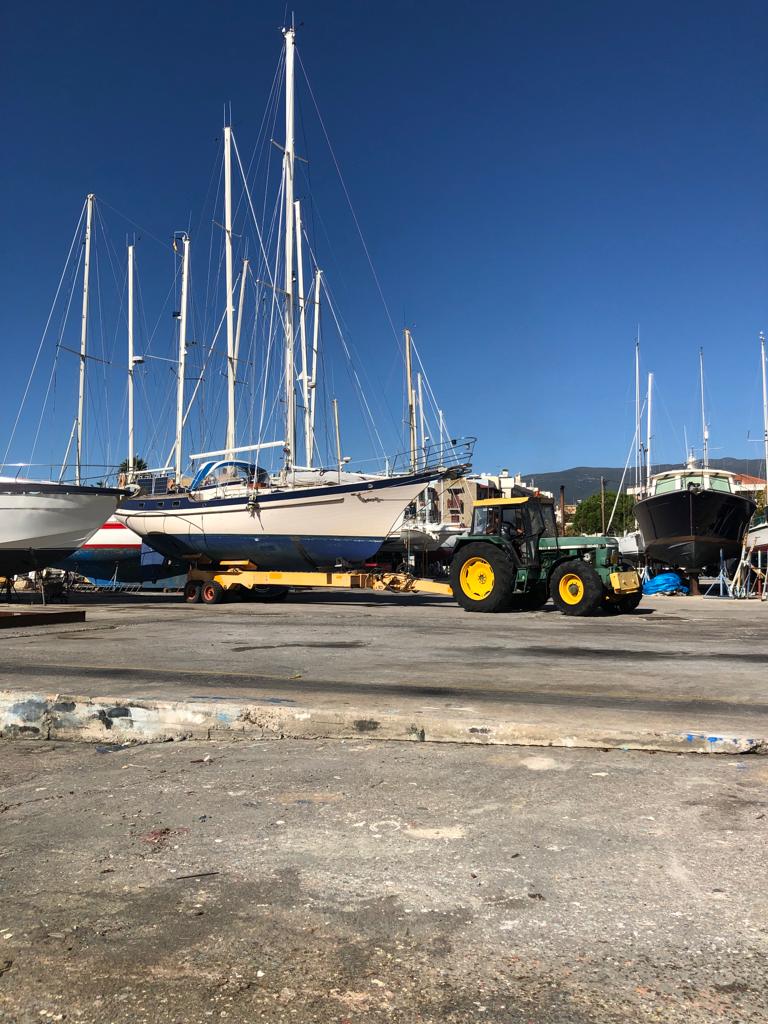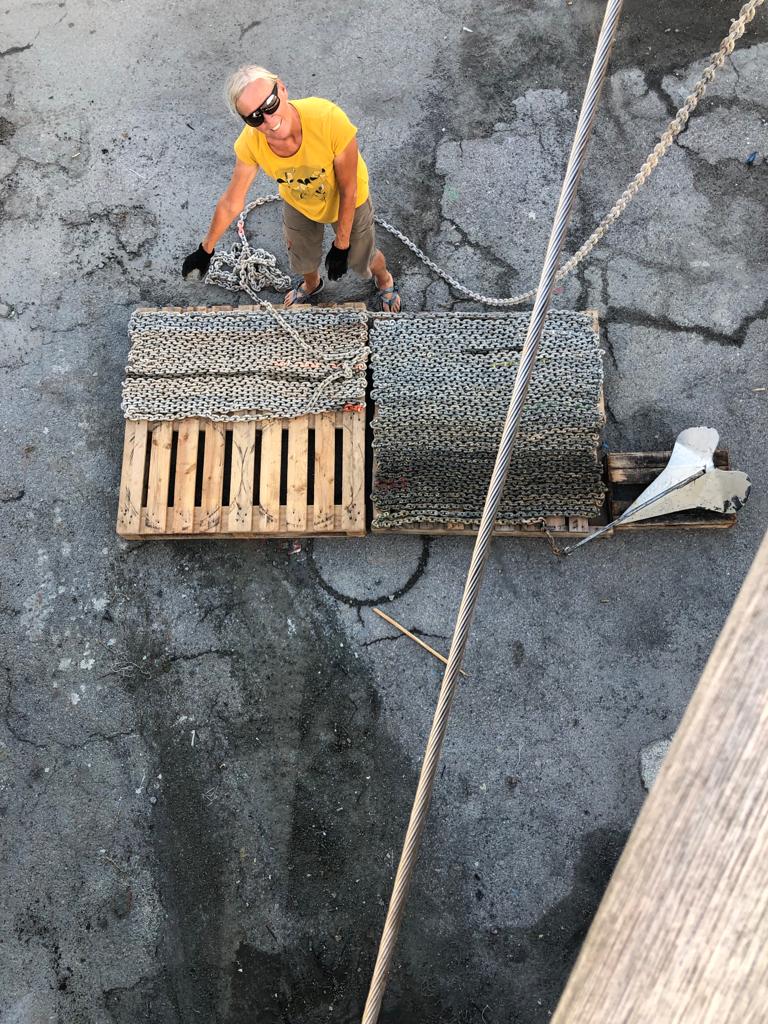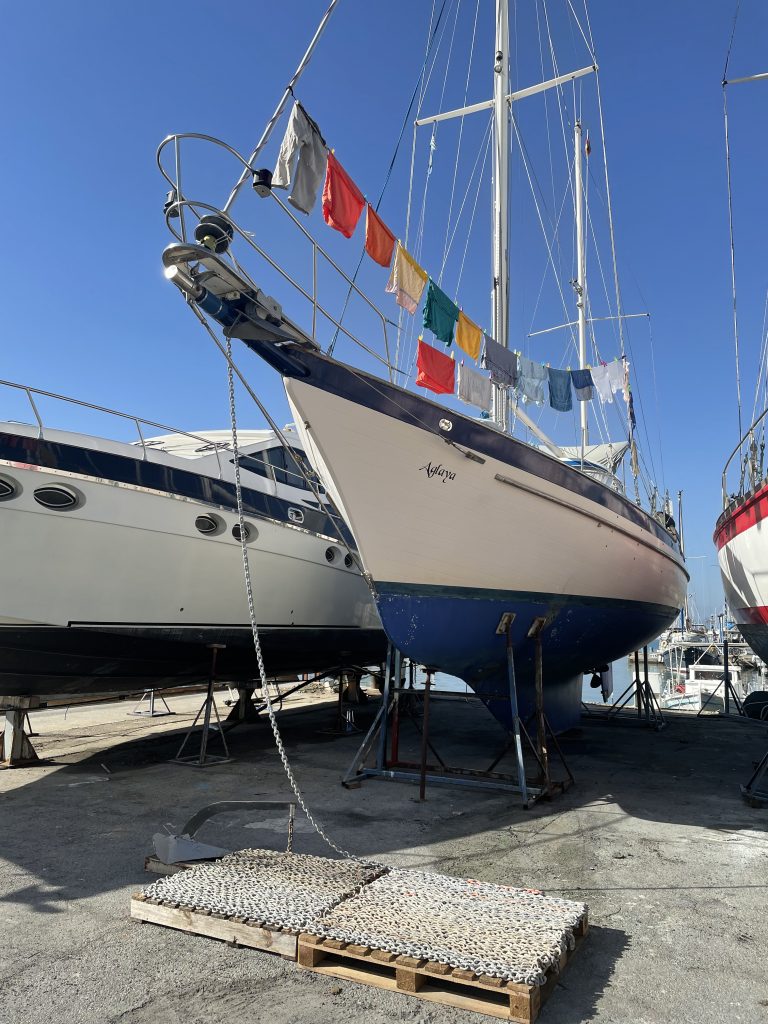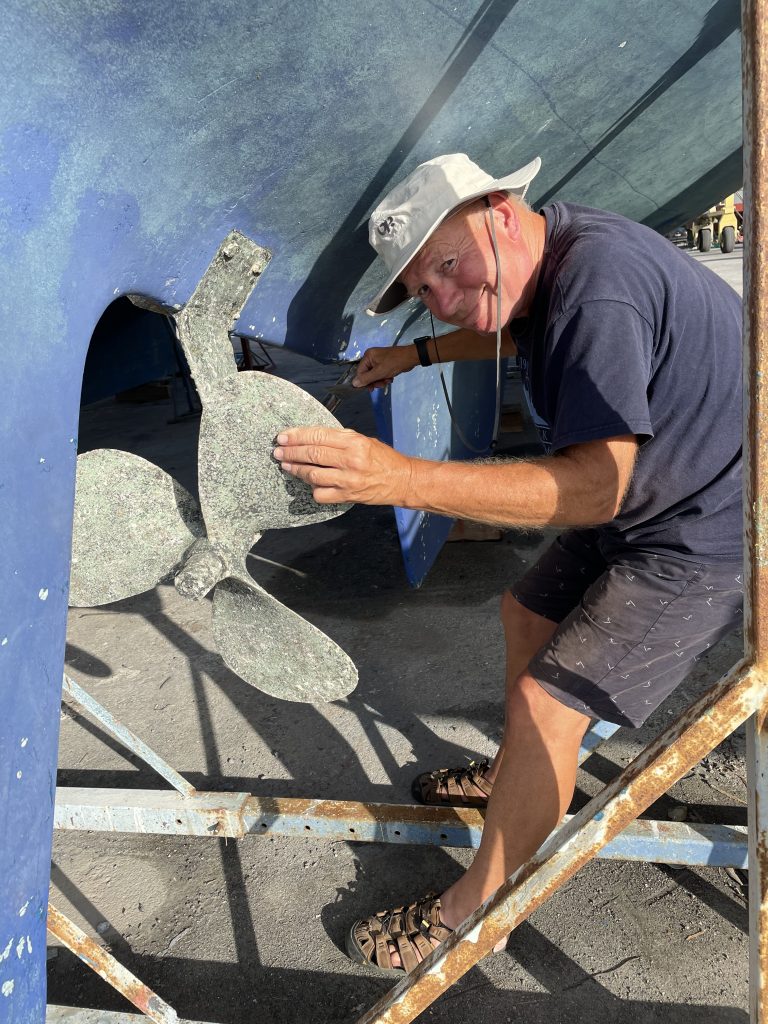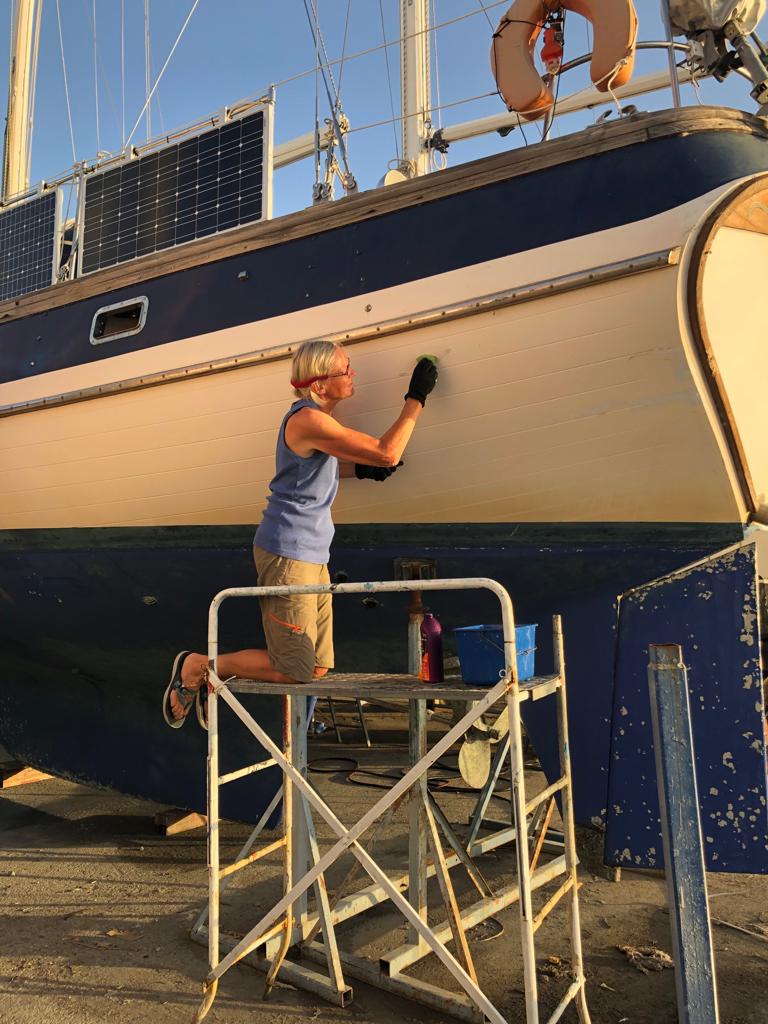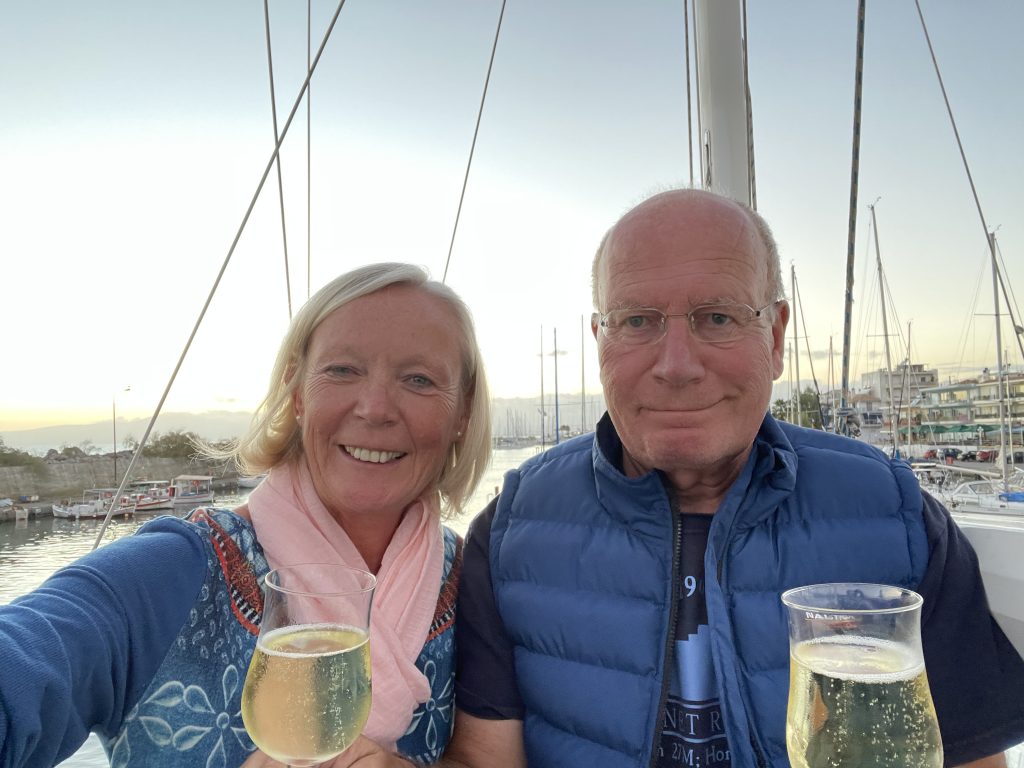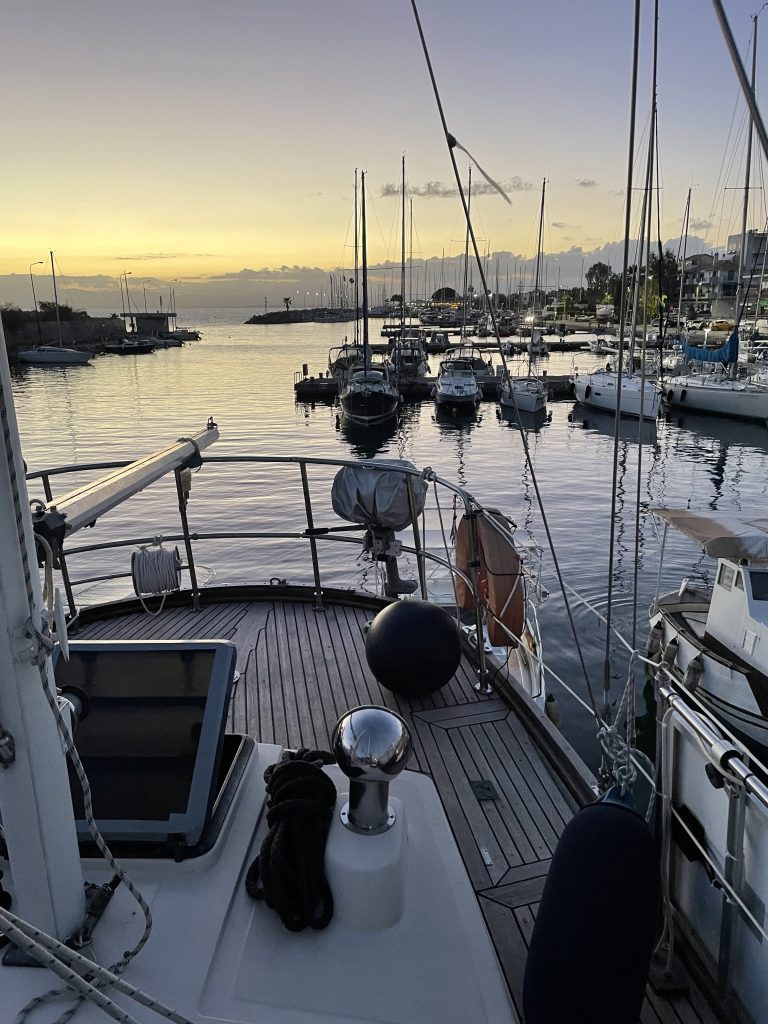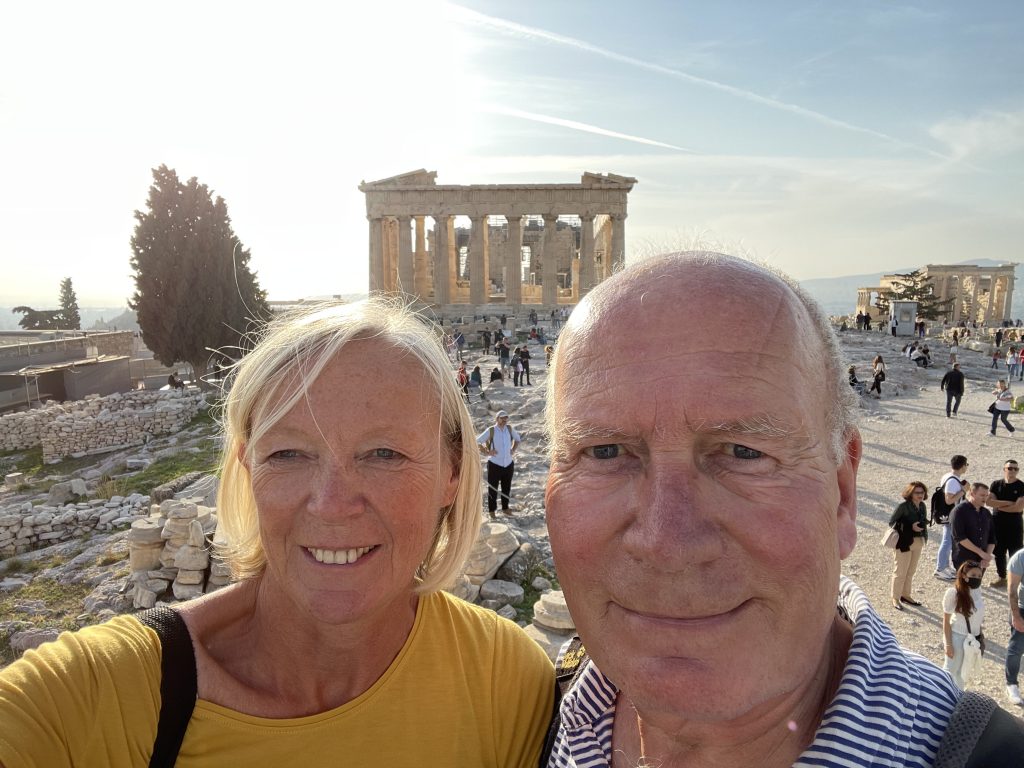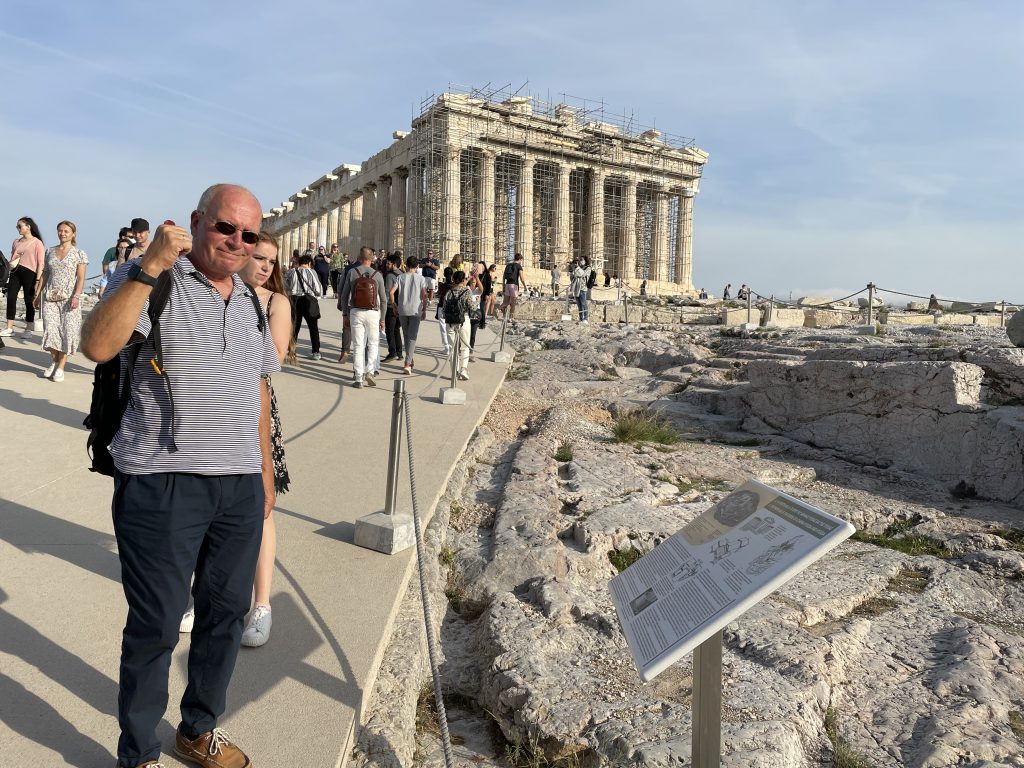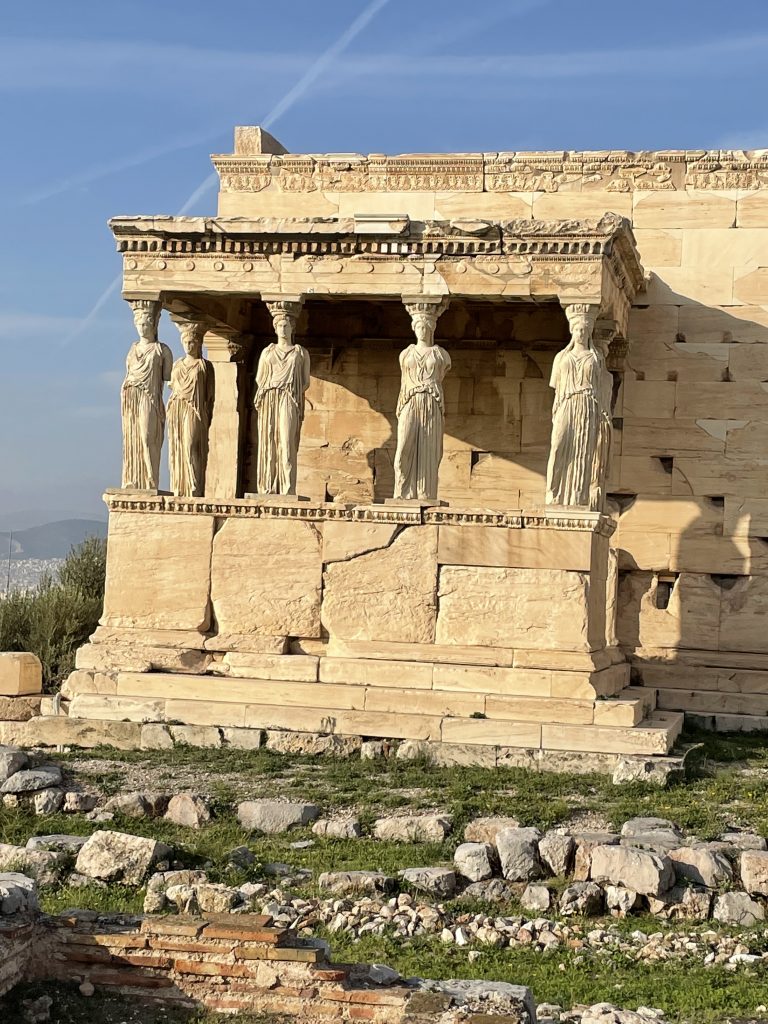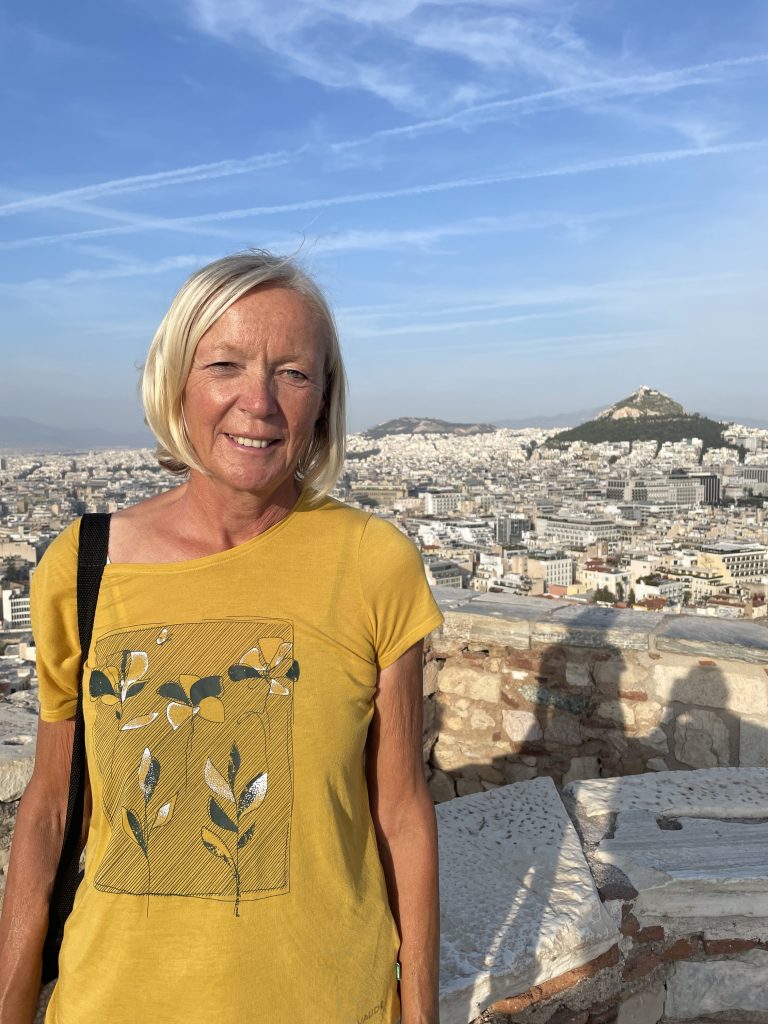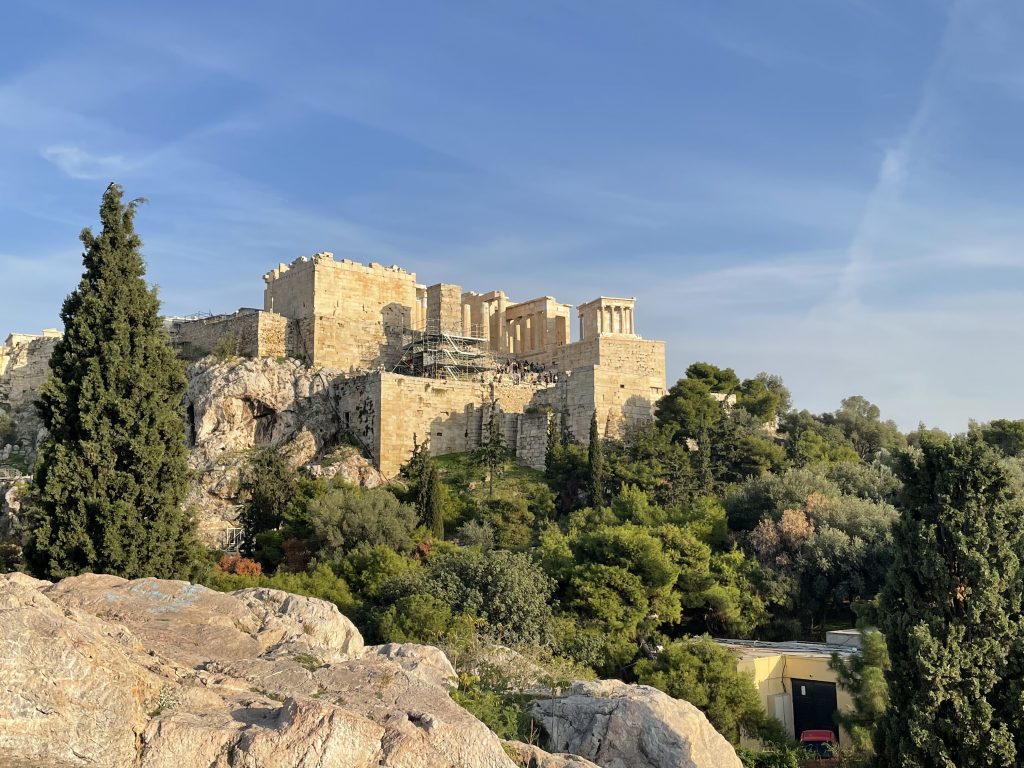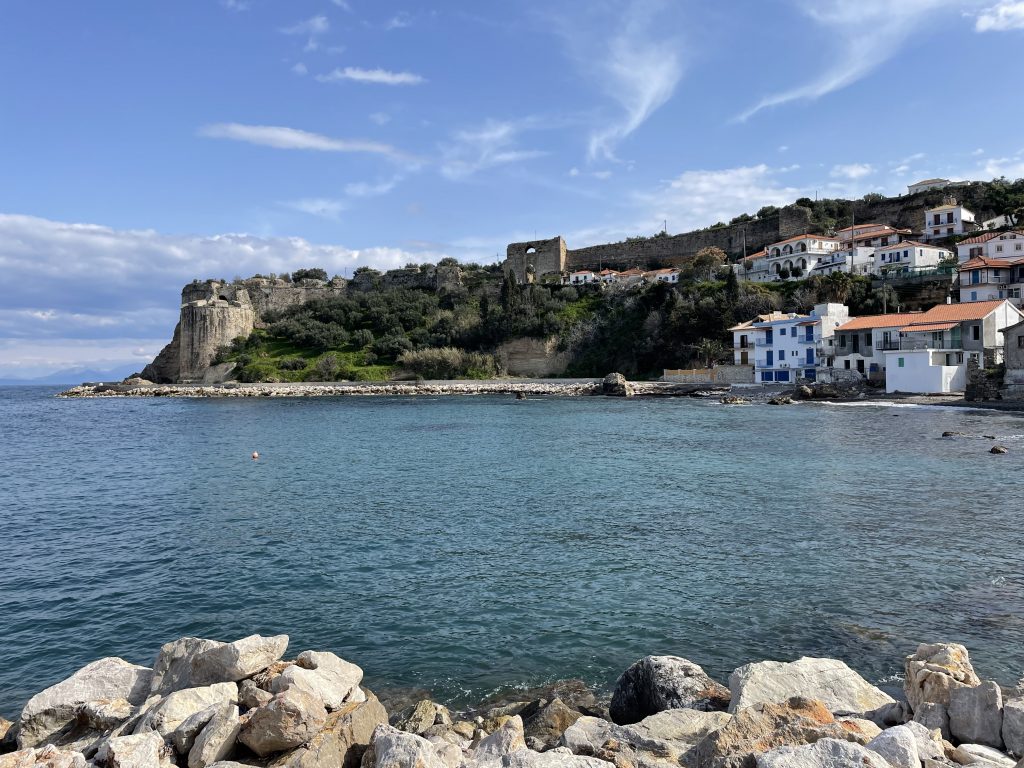
The big high over Russia, Lithuania and Belarus has been bringing a strong, cold wind to the Black Sea for days. From there, it blows from the northeast into the Aegean Sea and further west through almost the entire Mediterranean Sea. Over the partly still snow-covered mountains of the Peloponnes it rushes violently and icy cold down to Kalamata. Today, Sunday, we escape by bus to Koroni in the hope of some warmth. Two years ago, we spent a warm summer night at anchor off Koroni.
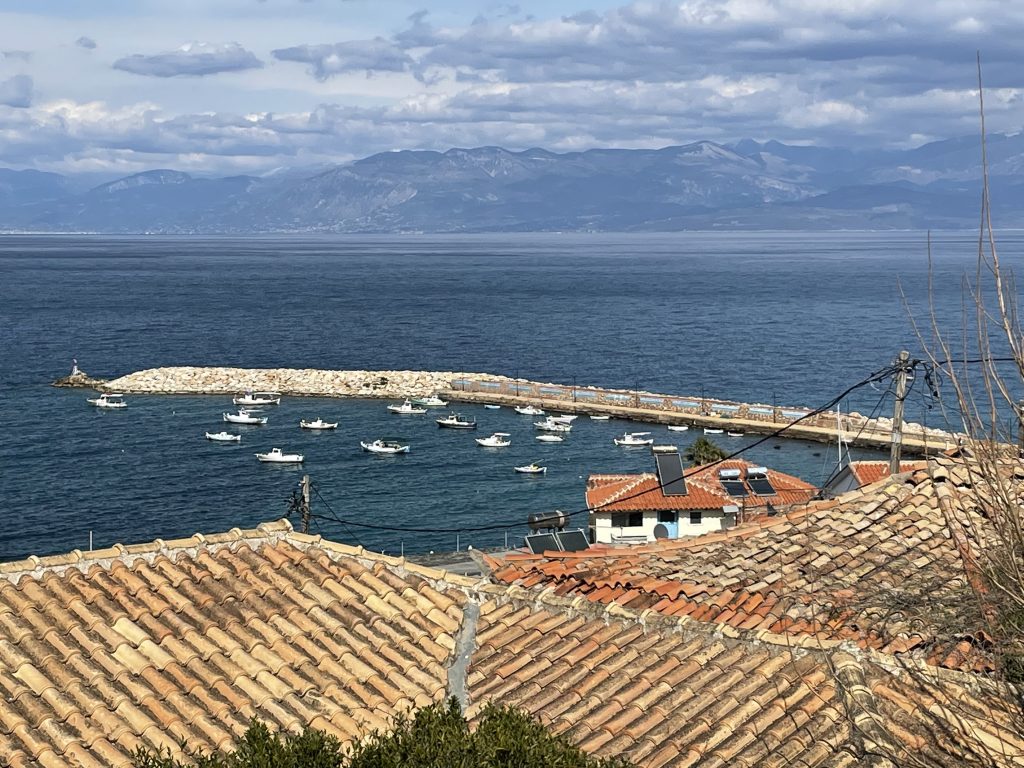
Koroni is about 50 km south of Kalamata on the west side of the Messenian Gulf. The remains of the Venetian fortress can be seen from afar. If you climb up, you have a great view over the entire Messinian Gulf, to Kalamata, to the high mountains of the Taygetos and to Cap Tenaro. We have already climbed several Venetian fortresses in recent years. But never before have we visited one where there are so many "normal" dwellings within the fortress walls. You can even visit a nunnery inside. Early in the year it is tranquil and cosy here in Koroni. In summer it is certainly quite different. The beautiful sandy beaches attract many summer holidaymakers. We enjoy the warmth and peace.
